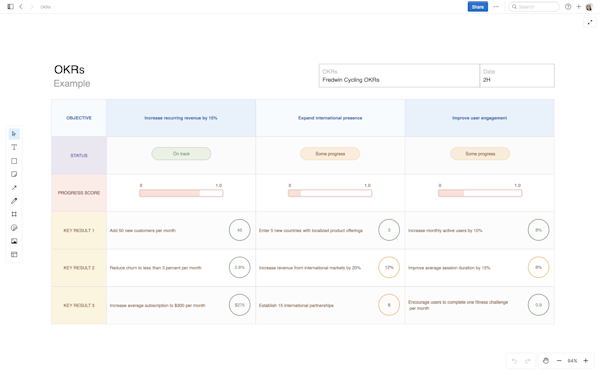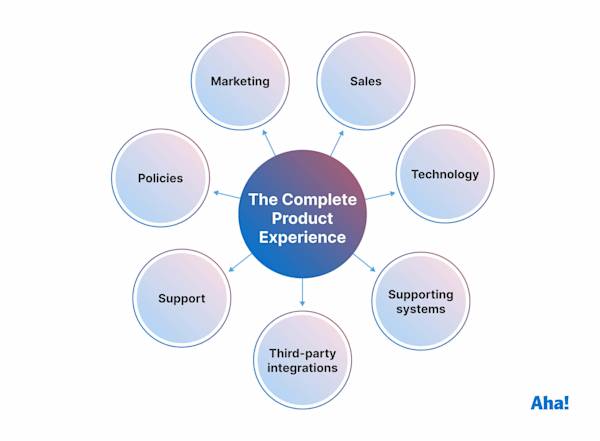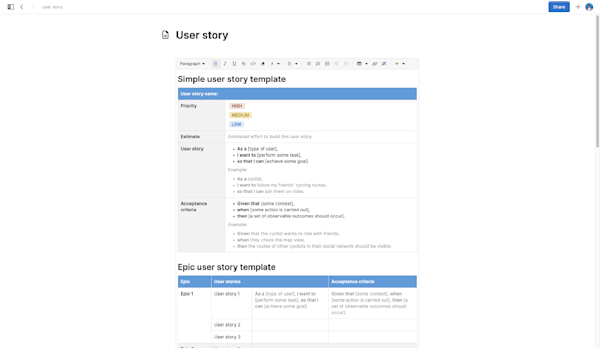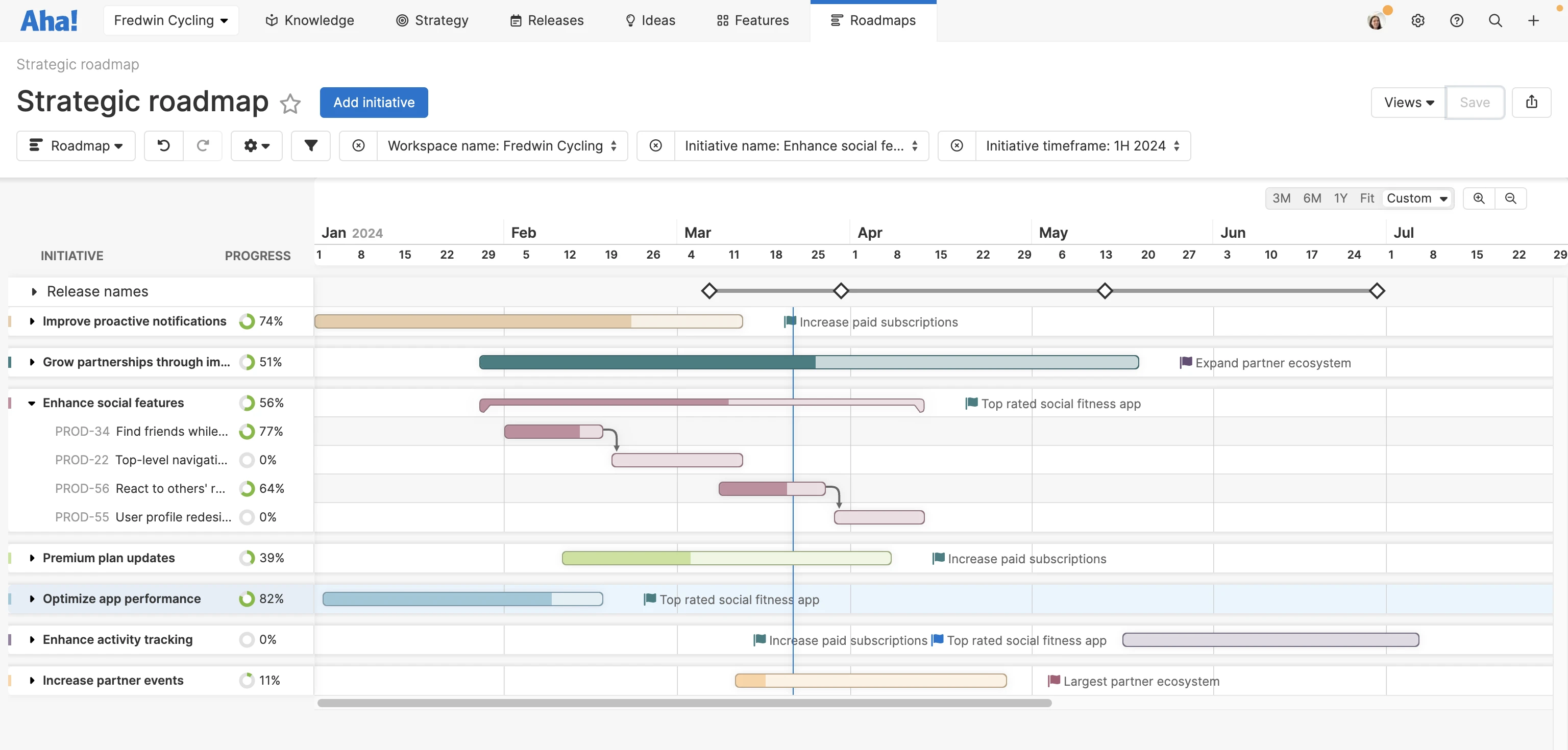A complete guide to enterprise transformation
Last updated: March 2025
Many businesses today are undergoing radical change. The driving factor is evolving customer expectations: increasing demand for personalized products, frictionless service, and dynamic support. Improving innovation and customer service requires a massive shift in thinking. This is different than simply managing projects and delivering new capabilities.
Change at this scale is called an enterprise transformation. It fundamentally shifts the entire organization's focus around delivering a Complete Product Experience (CPE). Embracing a CPE-oriented mindset requires long-term thinking about what customers really want from you beyond the product or service you provide today. It means thinking holistically about your teams, technology, and enterprise data — and how you can reshape the entire organization to better serve customers.
Drive customer-focused innovation efforts. Try Aha! software.
Enterprise-wide change is necessary to maintain growth in today's highly competitive marketplaces. To successfully transform, each business needs a unique strategy centered around the customer and the teams that get the work done. These efforts are complex and require buy-in across the organization to make a meaningful investment in the future.
This guide will help you learn the fundamentals of enterprise transformation, including the different types of transformation and guidance for getting started. Use the following links to jump ahead to a specific section:
What is enterprise transformation?
Enterprise transformation describes the different types of widespread organizational change needed to deliver better customer and employee experiences. It is also often referred to as "business transformation" (though this term can sometimes apply to smaller companies). Achieving this type of transformation requires a new approach to strategy, processes, and technology.
The concept of transformation is not new. Companies have always had to innovate and adapt to keep up with new demands. But enterprise transformation goes beyond implementing innovative ideas — it is really about rethinking how you create value at every customer touchpoint.
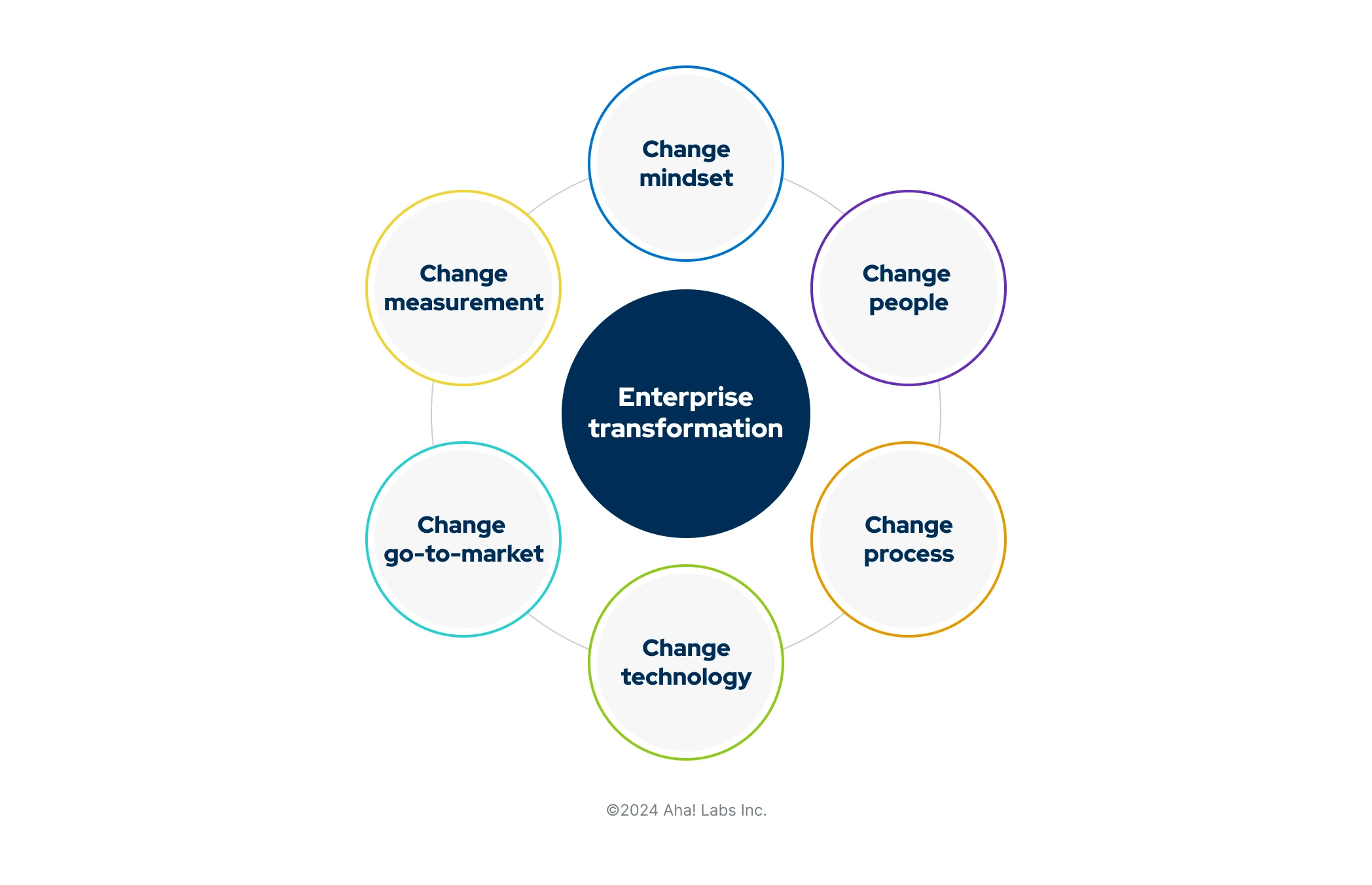
What are the benefits of enterprise transformation?
Enterprise transformation is primarily driven by heightened customer expectations. But it is also about business survival. Large enterprises with vast product portfolios can find it particularly hard to implement this level of change. But even though the effort to transform is monumental, so are the benefits you stand to gain:
Customer loyalty | Serve your customers better — delivering real product value that satisfies their needs. |
Strategic clarity | Set a bold vision of the future you want to achieve. This strategic direction helps teams understand how their work supports larger objectives. |
Operational efficiency | Improve responsiveness across the organization and deliver products and services faster. |
Cost reductions | Get closer to customers so you can focus resources where they matter most and strategically cut other costs. This includes choosing technology that streamlines processes and improves customer insights. |
Innovation | Reveal new customer-driven insights about the future. You can anticipate new problems to solve and develop more inventive solutions. |
Engaged teams | Bring optimism and renewed energy to your organization. Teams can see the impact of their work and understand why it matters. |
Transformation efforts are incredibly challenging and can even be emotional. Overhauling the culture and mindset of an organization means some people will respond with uncertainty and skepticism. People might wonder how they will fit into the new environment and whether changes will stick. This is why it is important to involve everyone in the transformation — with strong leadership from the CEO and executive team.
